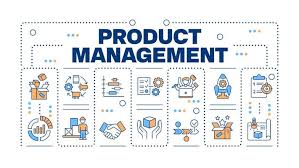Why Product Due Diligence Is Your Secret Weapon
Too many sellers treat Product Due Diligence (Product DD) as an optional “nice-to-have” exercise—and pay for it with stalled processes and trimmed valuations. In reality, proactive Product DD is your secret weapon: it turns nebulous feature lists and roadmaps into hard evidence of value, accelerates buyer confidence, and can unlock premium multiples.
What Product DD Actually Does
- Maps Real Usage to Value
- User-journey analysis: Identifies which features drive activation, retention, and upsells.
- Data-driven prioritization: Shows buyers not just what you built, but why customers love it.
- Validates the Roadmap
- Market alignment: Tests proposed features against buyer pain-points and competitive benchmarks.
- Feasibility checks: Ensures timelines and resourcing plans can deliver on promises.
- Surfaces UX & Scalability Bottlenecks
- Usability audits: Reveals friction in onboarding flows or core workflows.
- Performance profiling: Highlights architectural constraints before they become integration nightmares.
- Quantifies Technical Debt in Business Terms
- Translates code-quality issues into estimated remediation effort and its impact on future feature velocity.
Why Sellers Gain
- Enhanced Credibility: A Deloitte study finds that in-depth sell-side diligence not only demonstrates maturity but “enhances credibility, enables quicker responses to buyer queries, and drives comparability of offers” Deloitte.
- Faster Timelines: Buyers armed with a clear product dossier cut through Q&A cycles, shaving weeks off the process.
- Higher Multiples: By leading with strengths—rather than scrambling to explain gaps—you often preserve, or even boost, your valuation.
How to Run a Lean Product DD Sprint
- Kickoff & Scoping (Day 1):
- Align stakeholders on core value drivers (e.g., activation, retention, upsells).
- Define sources: analytics platforms, customer surveys, feature-flag data.
- User Insights & Feature Audit (Days 2–3):
- Pull feature-usage reports; interview top 20% of users.
- Tag features by business impact: must-have, nice-to-have, legacy.
- Roadmap Validation (Days 4–5):
- Workshop with product and sales teams to stress-test proposed features.
- Benchmark against competitors and market research.
- Synthesis & Reporting (Days 6–7):
- Build a buyer-grade dossier: usage heat maps, roadmap feasibility chart, UX gap analysis.
- Deliver an executive summary with prioritized recommendations.
Your takeaway
Product DD isn’t a chore—it’s the lens through which buyers see your true value. By turning product insights into hard evidence, you accelerate processes, elevate credibility, and position yourself for the best possible deal.



















